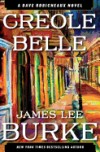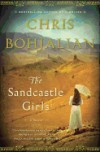My Mac’s clock reads 7:43PM on what is a beautiful mid-September evening and I have just finished answering the last of the day’s emails. I’m sitting at my desk, facing four side-by-side casement windows opened to take in the seasonally cooler air. With their nearly unobstructed view of the backyard, I am posed to look up at two towering and very old Maple trees that stand guard on opposite sides of a very small landscape, their outstretched branches overlapping to form a living arch overhead. I see through the spaces between the rustling hordes of leaves, that darkness has descended.
Every year, and it’s been more than a few, (ha!) I get the very same feeling of nostalgia as the generous lingering light, of those long summer days, fades earlier and earlier in acquiescence of the approaching darkness that the slightest hint of autumn’s arrival initiates. The last couple of evenings have cooled to the mid-40’s (F) and, my being very sensitive to temperature changes, I have added a light blanket over top of the bed sheet. Cool nights followed by warm days. These are typically nature’s first signs that autumn is quickly approaching, here in the Northeast.
There are, oddly, earlier and subtler signs of the approaching fall season. While it’s not “technically” autumn by the calendar’s rule, I will usually get an inkling of its intention on a random day somewhere between late July and early August. Too soon, perhaps, and quite serendipitously, it goes something like this:
Most mornings, as is usual for me, I will step out my back door and stand quietly on the deck for a few moments to take in the nature of the day through my senses. On no particular mid-summer feverish morning, as I grab the door handle with one hand and unlock the deadbolt with the other, I anticipate the blast of heat that will meet me head on as soon I open the door. I brace myself and step outside into the sizzling heat. I look up at the sky and quickly sense that something is amiss. As I continue my gaze upward, it appears that the color and texture of the sky has changed. The striking blue of previous days’ skies has been watered down to reflect a color less than its typical hue. The sun’s glare, in typical fashion, makes my eyes squint… yet, in striking contrast, I note that it feels just a shade less intense than usual. After adjusting my gaze away from the sun, I look at the tint of the still green leaves on those aged Maples and they look, to me, to be somewhat faded. In that moment, I will ask myself if my impression is but a by-product of my fickle imagination having misfired a conflicting signal to my senses. That annual question always results in my second-guessing what I have just witnessed.
Add, to the second-guessing, the fact everything else that surrounds me is contradictory to what my little sensory side trip suggests. The bundles of flowers in pots on my deck are blooming like mad, as the bees and butterflies that visit throughout the day are busy at work. I look down on the grass that carpets the yard and it has definitely thinned from the scorch of the sun’s heat, despite my almost daily ritual of watering during long summer droughts. The surrounding beds of hostas are in bloom, as are the pretty red and pink non-stop begonias and inpatients that I add every season to boost the color of those shady areas. The mid morning sun that hovers high from the southeast radiates down onto the exposed back deck and I feel the burn on my pale Irish skin.
I will often retreat in late afternoon, on those lazy, hot and humid summer days, to the cushioned chaise that sits on a section of the tiny backyard patio and is cooled by those wonderful old Maples, accompanied by a glass of freshly brewed iced tea and a good book. As I half read and half doze, a multitude of male cicada bugs, atop the trees, are singing their ritual mating song and it fills the thick air around me. Some might describe their buzzing as shrill or anxious, but it comforts and draws me into a quiet, meditative state. Later, the day’s abundant light gives in slowly but steadily to evening’s first glow of twilight that will, in turn and more quickly, hand itself over to dusk. The now exposed fireflies dance and twinkle mid-air, welcoming in the long-awaited blackness of nightfall. My ears are tuned in to the high-pitched sounds caused by the unified rubbing of a thousand pairs of winged male crickets who, like the cicadas, are hidden from sight and busily wooing their sought after prize, the much more demure, females. They will chirp, unceasingly, under the heaviness of the night air. Summer is thriving all around me, but…
Something deeper and wiser beckons on this nondescript mid-summer evening when I am quieted by the slowing of the day’s liveliness. I turn my attention away, from what my ego’s definitive linear mind judges to be a grossly premature forecast of autumn’s descent, to listen. My intuition, so well honed in its wordless yet decipherable message, has bubbled up to remind me to embrace this moment despite the deep rooted, ever-present constant of change that forewarns, in whispers, of its coming.




